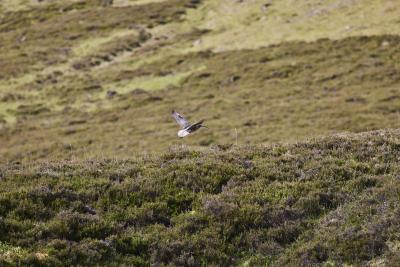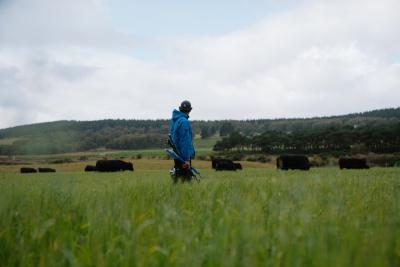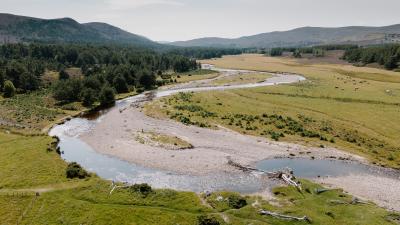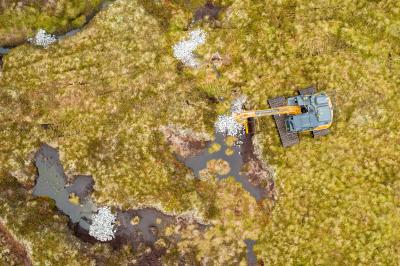Farming and land management
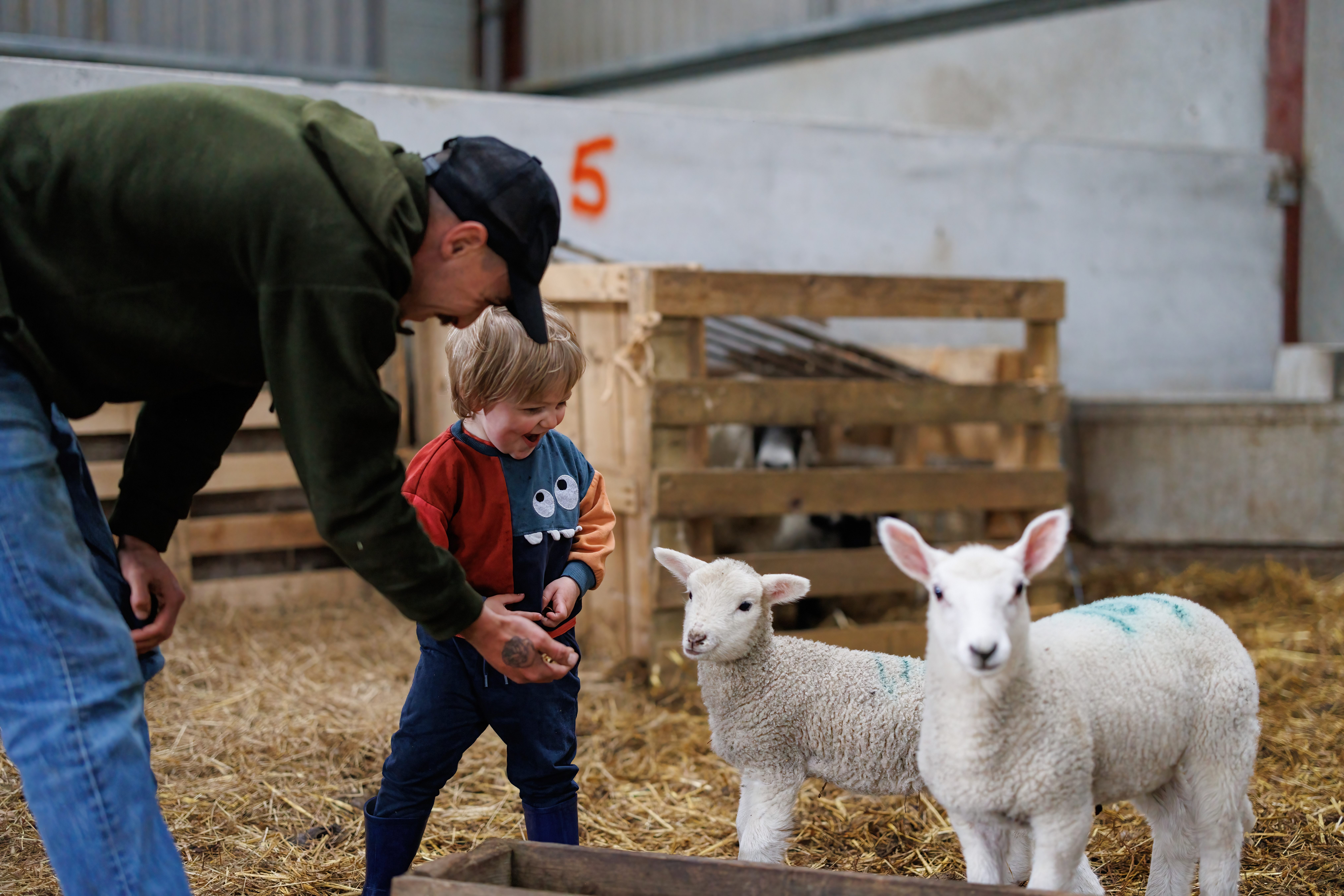
The Cairngorms National Park covers an expanse of 4,528 square kilometres - an area twice as large as the Lake District National Park and bigger than the entire country of Luxembourg. However, unlike a number of national parks around the world, none of this land is owned or managed by the Park Authority.
Approximately three quarters of land is privately owned by individuals or trusts and there are over 150 different landholdings, ranging in size from less than 100 hectares to over 40,000 hectares. Significant areas such as Mar Lodge Estate in Deeside and Abernethy Estate in Strathspey are owned by charitable conservation bodies, whilst government agencies such as Forestry and Land Scotland, NatureScot and Highlands and Islands Enterprise also own and manage large areas.
Some of our work in this area
Related
Visitor management resources for land managers
The Cairngorms welcomes around two million visitors every year, who make a valuable contribution to the local culture, vibrancy, and economy of the National Park.
Cairngorms Agricultural Advisory Group
Representing the interests and views of farmers, crofters, organisations and groups working in agriculture in the Cairngorms National Park.
Cairngorms Upland Advisory Group
Dealing with upland management issues in and around the Cairngorms National Park.
Farming and land management
Most of the land in the National Park is privately owned. The Park Authority has strong working relationships with landowners and our aim is to help everyone work together to achieve the best results for the National Park as a whole.
Forestry and woodland
The Native Woodland Survey of Scotland shows that, while the average proportion of native woodland across all Scottish local authority areas is 22.5%, the Cairngorms National Park has at least 69%, making it the only area in Scotland where native woodland makes up the majority of the woodland resource.
A significant proportion of the National Park forests are managed for timber production, providing employment through all stages of forest management, from forest planning to tree nurseries through to planting, felling and providing raw materials for sawmills. One major sawmill and several small-scale sawmills are located within and on the edge of the National Park.
The Cairngorms National Park Forest Strategy provides strategic direction for managing existing - and designing new - native woodlands and commercial forests in the Cairngorms National Park. It gives context about existing woodland and forestry in the National Park and helps to ensure that future native woodland creation or commercial forestry activity is directed to where it matters most.
The Park Authority – with the support of partners Scottish Forestry, NatureScot and the Woodland Trust – is offering grants of up to £3,000 to help reduce the cost of developing woodland creation proposals within the National Park.
Get in touch
For more information on our Woodland Challenge Fund:
- Check out our funding opportunities page
- Call our Woodland Adviser on 01479 873 535
- Email [email protected]
Moorland
Much of the moorland in the National Park is actively managed and characterised by a patchwork pattern of heather burnt in strips across the hillside. Burning takes place outside of the summer months when birds are breeding on the moor. The idea of the burning is to create a mix of habitat which provides long heather and shrubs like juniper for birds to shelter in and short fresh green heather for them to feed on.
In some places, management of moorland is focused on achieving very high numbers of red grouse for shooting in the autumn. As well as burning, moorland managers control the numbers of predators, such as foxes and crows, which feed on grouse and other birds like the curlew and golden plover.
It is recognised today that well managed moorlands play a significant role in supporting a range of habitats and species, as well as being an important part of the area’s culture and economy. The Park Authority is keen to see greater species and structural diversity on grouse moors, with more pockets and strips of trees and shrubs on moorland edges, steep slopes, in gullies and around woodland remnants.
The Park Authority works closely with land managers, including through the East Cairngorms Moorland Partnership, to support the sharing of knowledge and best practice.
Get in touch
For more information:
- Call us on 01479 873 535
- Email [email protected]
Peatland
Peatlands cover around 20% of Scotland’s land and store around 1.6 billion tonnes of carbon, equivalent to around 140 years’ worth of Scotland’s annual greenhouse gas emissions. For this reason, Scottish Government has set ambitious targets for restoring 250,000 hectares of degraded peatlands in Scotland by 2030.
Within the Cairngorms National Park, we estimate that there are around 90,000 hectares of impacted peatland and 57,000 hectares of this has experienced some form of erosion. Peatland restoration also helps store carbon: restoring one hectare of actively eroding peat saves up to 19 tonnes of CO2 equivalent each year.
£250 million has been committed by the Scottish Government over 10 years for peatland restoration. Part of this funding is allocated to the Cairngorms National Park Authority as one of the five Peatland ACTION delivery partners, to distribute grant funding to projects in the National Park. This includes Cairngorms 2030, a five year programme supported by The National Lottery Heritage Fund.
The restoration of peatland stops the loss of carbon, benefits biodiversity, improves water quality and helps alleviate flooding. This is one of the key deliverables that the Cairngorms can undertake to help Scotland meet its net zero targets.
The Cairngorms Peatland ACTION programme provides funding and technical support for peatland restoration projects in the National Park, including a new entrant scheme to help train up local civil and plant businesses.
Get in touch
For more information email [email protected]
Advisory groups and forums
Our work on farming and land management is informed by the advice of groups and forums set up to steer and influence our work, sharing relevant knowledge and expertise to ensure that our approach is rooted in best practice, and reflects the lived experience of people and communities across the Cairngorms National Park.





